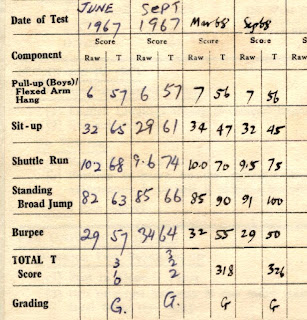Still I was quite consistent in maintaining an average fitness and never had serious problems with my IPPT (Individual Physical Proficiency Test) during my reservist days. Most times I was able to pass with a comfortable margin; but with much effort of course, I must add.
Why this sudden talk about fitness? Yesterday I was at the National Canoeing Championships at the MacRitchie Reservoir and saw some young kayakers doing their chin-ups in the very strange fashion that I used to do in my kampong days. At that time, my brothers and I liked to do our chin-ups on the horizontal cross bar of our door frame. Instead of pulling upwards till our chins crossed the bar, we would bend our heads forward so that the back of the neck touched the bar. I wonder if there is a name for this style of doing chin-ups.
By the way, how do you usually do your chin-ups? Is it with the palms facing inwards towards you or outwards? I have been told that facing inwards is easier, but I always found it more comfortable to do it with my palms facing forwards.
Recently we had a reunion with my ACS classmates of 1968. We all could remember the “Chin-up king” in our class, my friend Lim Hock Kheng. He could to do something like 15 to 20 chin-ups (sorry cannot remember exact figure) during the annual physical fitness test. What is more impressive is that today, at age 56, when most of us cannot even manage 1 chin-up, he could still do several (again, unfortunately I cannot remember the figure).
As for me, I was able to do 7 back then; which ain’t too bad right?
 My Sec 3 & Sec 4 results
My Sec 3 & Sec 4 results This photo taken about 5 years ago at the Kent Ridge Park shows me struggling like crazy to challenge my son at chin-ups. I think I won that day with 2 chin-ups. But today, it would be difficult to beat him. Being in the combined schools kayaking team, he can easily manage 30 at one go.
This photo taken about 5 years ago at the Kent Ridge Park shows me struggling like crazy to challenge my son at chin-ups. I think I won that day with 2 chin-ups. But today, it would be difficult to beat him. Being in the combined schools kayaking team, he can easily manage 30 at one go.
.JPG)
.JPG)
.JPG)
.JPG)




.JPG)
.JPG)













.JPG)




